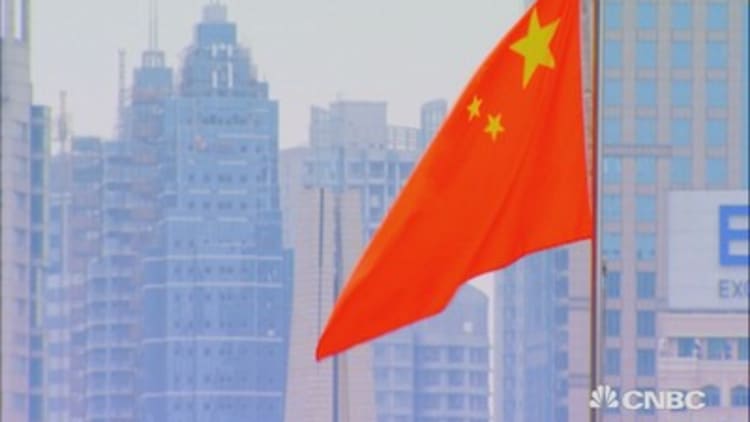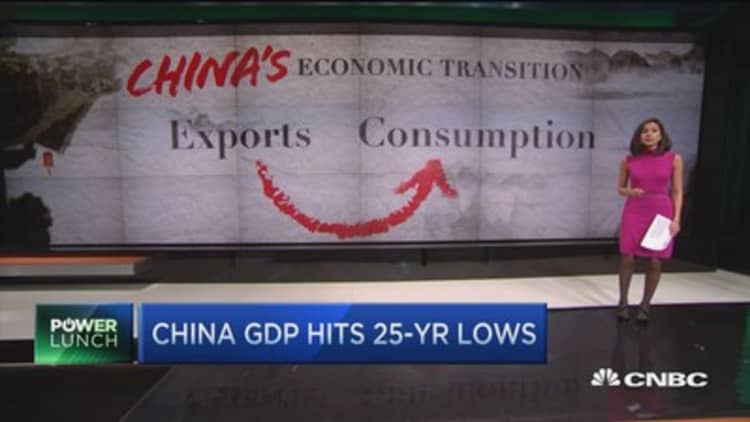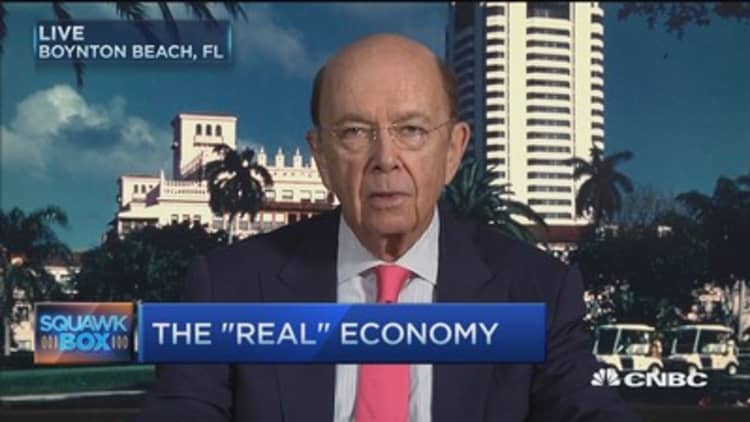



China announced Tuesday that its economy notched 6.9 percent growth in 2015 — down from the prior year, but perfectly matching expectations. And yet commentary from around the world suggests almost no outside investor or economist believes Beijing's figures.
Although there has never been definitive evidence that Chinese economic data is exaggerated, the widely-held theory says that China's National Bureau of Statistics will overstate growth in a stability-minded effort to hide the truth about a slowing economy. So instead of relying on government reports, China-watchers analyze other metrics for a more complete picture of the country's GDP.
"Nobody knows for sure, but when we look at things that are harder numbers to fudge...our estimate is growth probably about 3.5 percent versus roughly 7," said Gary Shilling, president of economic research firm A. Gary Shilling and Co.
The National Bureau of Statistics did not immediately respond to a CNBC request for comment on the allegations of inflated economic data, but there is a widespread perception that the department operates as a political messaging unit.
"We watch (the official GDP announcement) as closely as we do in some sense out of a sense of obligation," said Donald Straszheim, head of China Research at Evercore ISI. "I wasn't expecting to learn a great deal last night when these numbers came out."
Not only does China's NBS refuse to respond to inquiries, Straszheim said, but the statistics unit will announce only its total GDP growth figure — not the components of that number. "If you don't have the components, how can you have a total? And if you have the components, which would add to the total, why are they not publicly available?" Straszheim asked.
Strategies vary for divining China's actual GDP, with some economists parsing Beijing's reports for what they think are likely grains of truth, or even analyzing economic data from important trading partners like Australia. Commodity prices — particularly copper, iron ore, and to some extent oil — are another popular way of assessing Chinese growth.
For his part, Shilling said his firm models China's possible GDP growth on measures of rail traffic, electricity consumption, coal consumption and debt.
Billionaire distressed asset investor Wilbur Ross, meanwhile, told CNBC's "Squawk Box" that he sees China's actual growth at about 4 percent on a similar basket of metrics.
The "reason is that if you look at physical indicators — rail car loadings, truck loadings, cement consumption, steel consumption, exports, natural gas consumption, electricity consumption — none of those are consistent with 6.8 or 6.9," he explained.
Straszheim said his group uses data from sources it regards as largely independent from government pressure, pointing to commodity consumption among other measures.
But most of these indicators seek to measure the share of China's economy based on exporting, manufacturing, and capital investment — and Beijing has made no secret that it sees the country shifting toward an increasingly service-oriented economy. That could, in turn, potentially make it even harder for investors to know the truth about China's GDP.
"It doesn't take a rocket scientist to figure out the growth in old China for the past year or so has been somewhere around zero — it's nothing like 6.8 percent," Straszheim said, explaining that the "new" China of services and consumer spending is tough to measure in the absence of robust data from the private sector.
Even international businesses operating in China find it difficult to assess the state of the Chinese economy, according to Roger Altman, founder of investment banking advisory firm Evercore Partners.
"The business leaders I speak to invariably say 'I don't know whether China is growing at 4 percent, or 5 percent, or 6 percent. I really don't know despite having extensive business there,'" he told CNBC's "Squawk Box."
Derek Scissors, a scholar for the American Enterprise Institute, pointed out that China's own official numbers seem to contradict one another.
For example, China's Xinhua reported that November railways cargo fell 15.6 percent year on year, but the state statistics office said industrial production through the year was up 6.1 percent. "What? Did they just produce the goods and leave them on the factory floor and they never went anywhere?" Scissors asked.
For insight into how much Beijing may be massaging its data, Scissors said he is looking at reconciling official reports of a 15.4 percentage point increase in consumption's share of GDP (to 66.4 percent) with reports on the state of manufacturing and investment.
If China has made such significant strides in rebalancing, then "old" China is doing worse than officially acknowledged — and, conversely, the shift in economic drivers would have to be less than the NBS says if manufacturing and investment are actually at the reported levels, Scissors said.
Scissors puts the GDP figure at less than 4 percent: Much lower than China says, but higher than the no-growth implications from external indicators like import demand or money flight.
"All these calculations are kind of a joke, right?" he acknowledged. "But if you use their domestic numbers as they report them, there are some obvious contradictions, and if you try to massage them, they all massage downward."
But it's important to remember that GDP is just a transaction figure, and it does not necessarily represent the health of an economy, Scissors said, explaining that Chinese income levels are likely better measures on that front.




